Search
Search Results
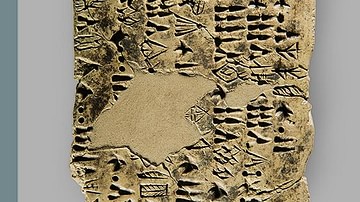
Image
Early Elamite Clay Tablet with Numerical Signs from Southern Iran
Early Elamite clay tablet with numerical signs found in Tappeh Yahya, Kerman, dating to c. 3100 to 2900 BCE (Yahya Period IVc). National Museum of Iran, Tehran, inv. no. 4065. Photo by Nima Fakoorzadeh (Baloot Noghrei) Tappeh Yahya...
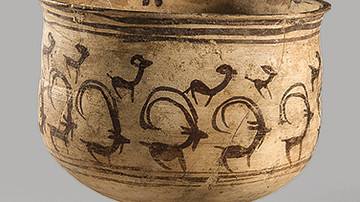
Image
Terracotta Goblet with Gazelles and Ibexes from Shahr-e Sukhteh, Iran
Terracotta goblet with gazelles and ibexes, found in grave no. 725 in Shahr-e Sukhteh, southern Iran, Early Bronze Age, c. 2800-2400 BCE. National Museum of Iran, Tehran, acc. no. 12947. Photo by Nima Fakoorzadeh (Baloot Noghrei...
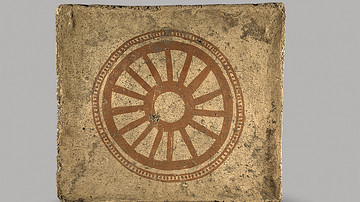
Image
Painted Mural Tile with Wheel from Western Iran
Painted brick from Baba Jan, Luristan, Iron Age III, c. 850 to 550 BCE. National Museum of Iran, inv. no. 6735 This terracotta tile with a painted wheel is one of the c. 200 mural bricks that once decorated the “ceremonial rooms” of...
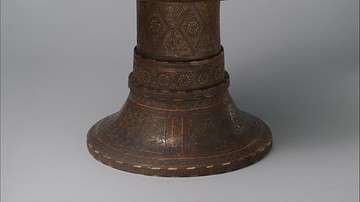
Definition
Khatam
Khatam is a decoration technique used exclusively on wooden objects and one of Iran's finest and most delicate crafts consisting of geometrical patterns. Small squares or triangles are laid next to one another in different compositions, colors...
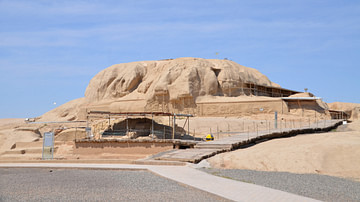
Image
Tepe Sialk, Iran
Tepe Sialk is an archeological site (a tepe, "hill, tell") near Kashan in central Iran consisting of two hills with six main phases of occupation. The oldest settlements in Sialk date to around 6000–5500 BCE while the ziggurat was constructed...
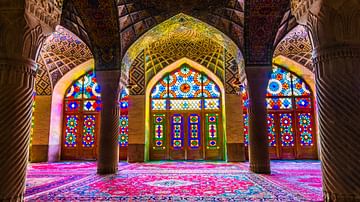
Image
Nasir al-Mulk Mosque, Iran
An interior view of the Nasir al-Mulk (Nasir-ol-Molk) Mosque, also known as the Pink Mosque, in Shiraz (Iran). The mosque was constructed between 1876 CE and 1888 CE, during the Qajar dynasty.
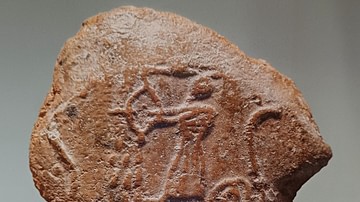
Image
Seal Impression of a Median Archer from Western Iran
Seal impression from Nushi Jan Castle Complex, c. 650 BCE. National Museum of Iran, Tehran, inv. no. 13145. Median art has few remaining examples and almost none that seem free from the impacts of its regional predecessors and contemporaries...
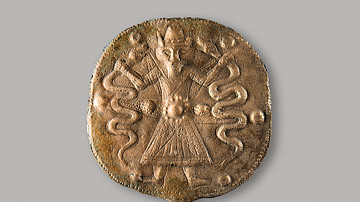
Image
Bronze Hairpin Depicting 'Master of Animals' from Iron Age Zagros
Bronze Hairpin Depicting 'Master of Animals', found in Luristan (central Zagros), c. 950 to c. 650 BCE. National Museum of Iran, Tehran, acc. no. 1459. Photo by Neda Tehrani (Baloot Noghrei) Long bronze hairpins crowned with a large...
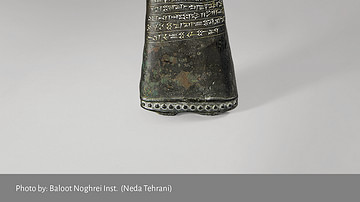
Image
Bronze Figurine with Babylonian Cuneiform Inscription from Western Iran
Bronze figurine with Babylonian cuneiform inscription found in Luristan Province, c. 1000-900 BCE (Iron Age II), National Museum of Iran, Tehran, inv. no. 1408. Photo by Neda Tehrani (Baloot Noghrei) The cultural influence of Mesopotamia...
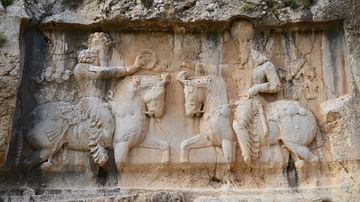
Image
Carving of King Bahram I at Bishapur, Iran
Sasanian relief depicting the investiture of Bahram I (r. 273-276 CE), the fourth Sasanian King of Kings of Iran, Tang-e Chogan. Bahram I is depicted receiving the royal diadem from the Zoroastrian supreme god Ahura Mazda. Bishapur, Iran.